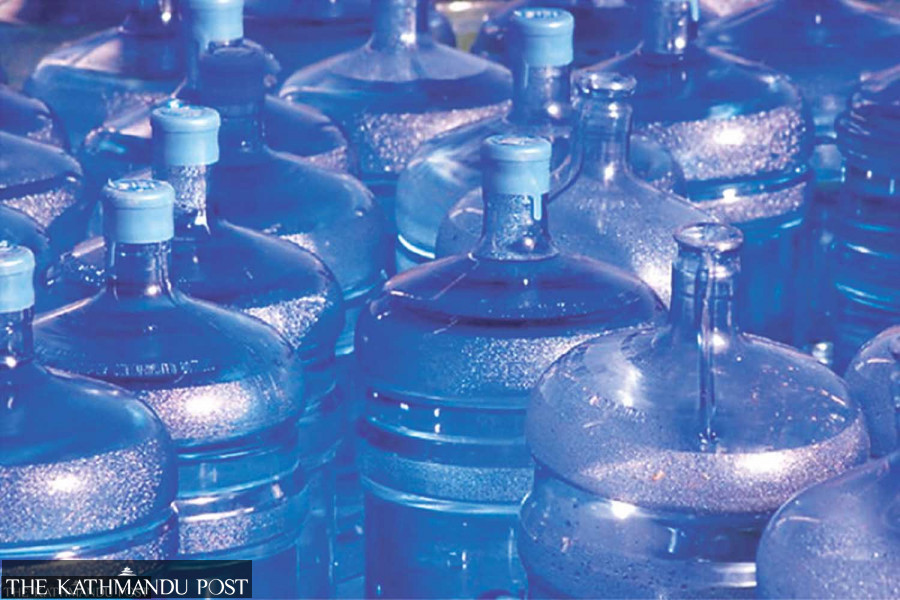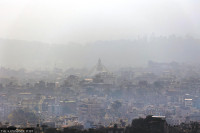Health
Rains raise alarm over water contamination, food poisoning
Doctors advise ensuring food and drinking water are safe before consuming.
Arjun Poudel
Last week, 47 people including children and elderly from Gokarneshwar Municipality of Kathmandu were hospitalised with food poisoning.
Health workers, who attended the victims said most of the people, who had eaten food at a baby’s naming ceremony, suffered from vomiting, diarrhoea, nausea, abdominal pain, and fever.
“We have been waiting for a report of water testing carried out on the samples collected from Gokarneshwar and Budhanilkantha Municipalities by the Epidemiology and Disease Control Division, “ said Sagar Ghimire, chief of Health Office, Kathmandu. "Our previous studies showed that drinking water being supplied in the Kathmandu Valley, whatever their sources, is contaminated.”
As the festive season nears, concerns grow over the quality of drinking water, which has already fueled cases of food poisoning and water-borne diseases—diarrhoea, dysentery, typhoid, and hepatitis.
In the last week of July too, around two dozen people including those from Nagarjun Municipality suffered from food poisoning after attending a feast on the 13th day of the death of their relative.
No one died in both of the said incidents, but doctors say that cases of food poisoning and waterborne diseases could shoot up in the coming days.
“We have been carrying out regular testing of drinking water including purified jar water and piped water at homes,” said Ghimire. “Our study showed most of the drinking water samples, on which testing was carried out, were found contaminated with deadly microbes.”
Most of the drinking water sources have been contaminated by floodwaters and the water supply channels of drinking water supply are not too reliable due to leaks, which allow the water to mix with sewage. Doctors say one should be more cautious while eating at parties and functions during the monsoon season, as the chances of water contamination are very high during monsoon.
Compared to water from other sources, people in the Kathmandu Valley believe that bottled water is safer. However, the presence of deadly microbes suggests many jar water brands are unsafe to drink, without treatment.
A similar study carried out by the Epidemiology and Disease Control Division in the first week of June showed that nearly a third (32.6 percent) of the drinking water being used in Kathmandu was contaminated with faecal coliform.
Along with jar water, tests were carried out on tap water supplied by the state utility. Samples of tanker water, tubewell water, water from wells, and Melamchi water too, were tested at the time.
Last year, the Kathmandu Valley witnessed a massive cholera outbreak as 70 percent of those who were examined, tested positive for Vibrio cholera 01 Ogawa serotype.
Cholera is a highly infectious disease that causes severe diarrhoea and vomiting, resulting in dehydration and could lead to death within hours if left untreated.
A recent study carried out by the Epidemiology and Disease Control Division had shown that nearly a quarter of the drinking water being used in Kathmandu has been found contaminated with faecal coliform.
Faecal coliform, a microscopic organism, lives in the intestines of warm-blooded animals or their faeces. The presence of faecal coliform means that the drinking water being used by the residents of Kathmandu is contaminated with sewage, doctors say.
Monsoon in Nepal is a season of epidemics wherein thousands of people across the country get infected with food-borne, water-borne and vector-borne diseases.
Doctors say due to poor sanitation and hygiene conditions, the country is highly vulnerable to water-borne diseases, including diarrhoea, dysentery, typhoid, hepatitis, and cholera, with thousands of people falling sick every year.
Doctors say initiating awareness drives and ensuring safe drinking water are the only ways to save people from water-borne diseases, including cholera. A combination of careful surveys, provision of safe drinking water, good sanitation and hygiene standards, social mobilisation, and treatment are required to contain the spread of infection, they added.




 9.12°C Kathmandu
9.12°C Kathmandu













%20(1).jpg&w=300&height=200)
